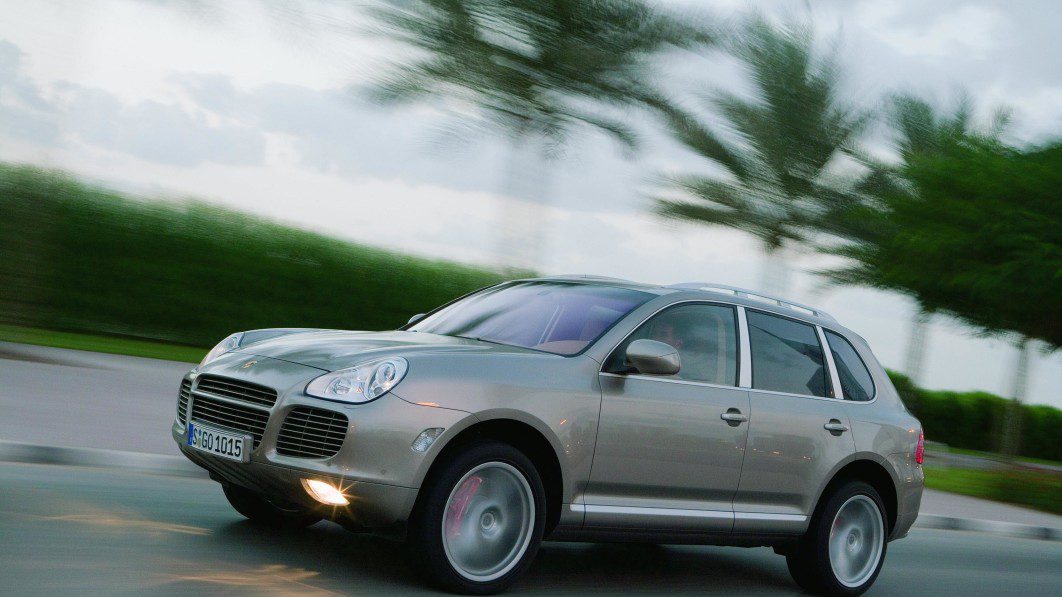Porsche considered introducing a minivan in the 1990s

Porsche is looking back at 20 years of the Cayenne, one of its best-selling nameplates and the model that helped save it from a grim fate. While building an SUV was the obvious choice in hindsight, the company revealed that it also seriously considered launching a minivan.
Setting sales records hasn’t always been par for the course at Porsche. The company found itself in dire financial straits in the early 1990s: it posted a massive loss of 240 million Deutschmarks in 1992, and clawing out of the red required making drastic reforms to the company’s structure. Executives began looking at ways to expand after realizing that the 911 and the then-new Boxster couldn’t carry Porsche alone.
“It was apparent that the sports car had its limits on the market. The sales division had clearly demonstrated this using market research. In the long run, Porsche would have ended up on a downward slope again,” remembered Anton Hunger, the head of communications for Wendelin Wiedeking, the former chairman of the company’s executive board.
Product planners analyzed five segments that the firm could branch out into and retained two options: a luxurious minivan and an SUV. For better or worse, the minivan was nuked by Porsche’s American division. “At the time in America, minivans were especially popular among families with many children and low incomes, but large SUVs were doing well across all income levels, even back then,” Hunger said.
With the minivan out of the equation, the Stuttgart-based company began developing its first SUV from scratch. Its search for a partner to split development costs with led it across town to Mercedes-Benz’s headquarters. The two companies had worked together before, they notably collaborated on the W124-based 500E, and Mercedes-Benz was in the middle of designing the first-generation M-Class.
“At that stage, we envisioned the Porsche SUV as a high-performance off-shoot of the Mercedes with its own exterior design, a lot of M-Class technology, but engines and chassis components from us,” said Klaus-Gerhard Wolpert, the first vice president of the Cayenne line.
Porsche and Mercedes-Benz forged a partnership in the summer of 1996 but dissolved it later that year due to “differing ideas about the two companies’ economic relationship,” according to Porsche’s archives department. Next, executives went to Wolfsburg and knocked on Volkswagen’s door. Keep in mind that Porsche and Volkswagen weren’t under the same roof at the time, though they were linked by family ties and past common projects. Volkswagen boss Ferdinand Piëch saw the Cayenne and agreed to work with Porsche on it in June 1997.
Called “Colorado” internally, the project spawned the first-generation versions of the Cayenne and the Touareg. Porsche handled most of the development work, it was notably responsible for the platform that underpinned both SUVs, and Volkswagen was in charge of production.
Venturing into SUV territory forced Porsche’s development team to learn new tricks. The company points out that its engineers suddenly had to worry about cargo space, loading height and wading depth, among other things. They learned by benchmarking other SUVs.
“I instructed all of my division managers to turn in their Porsche company cars. Instead, we purchased a number of different SUVs, such as the BMW X5, the Ford Explorer, the Jeep Grand Cherokee and the Mercedes-Benz M-Class. Colleagues were to drive these models on a day-to-day basis, and every four weeks we swapped them around,” Wolpert explained. The rest, as they say, is history.
Porsche unveiled the first-generation Cayenne at the 2002 Paris auto show and the model was an instant hit — in showrooms, at least. While enthusiasts and purists cried foul, demand was so high that production exceeded expectations. Porsche planned to build about 25,000 units annually, and it ended production of the first-generation Cayenne after making 276,652 examples (about 35,000 units annually).
Odds are we’d be writing a different story in 2022 if the company had released a minivan.
Related Video:



